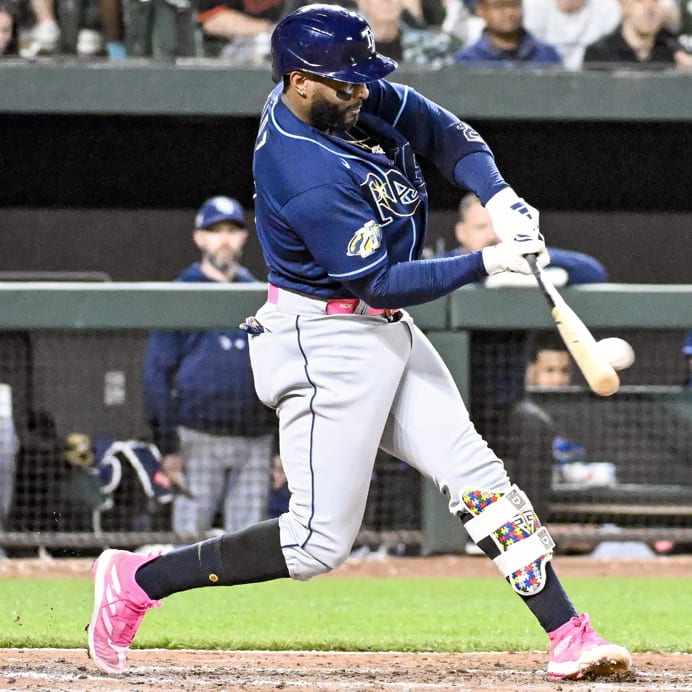This article is part of our MLB Barometer series.
It's the last Monday of the regular season, which means it's the last MLB Barometer of the season. Every year at the end of the season, I like to take a look at the players whose finish in earned auction value diverged most from their preseason NFBC average draft position. For the earned auction values, which are accurate through Saturday's games, I used a 15-team league with 70 percent of the budget spent on hitters.
I took a subjective look at some season-long risers last week, highlighting the player I was personally impressed with at each position, but this week's somewhat similar exercise will be more data-based. I'll provide the top riser and faller for each round and break down the seasons I found most significant, skipping those that I just discussed last week. Note that for the fallers section, I skipped players who missed more than half the season due to injury or suspension, though I left in players who fell because they were unable to stick in the majors, as the point of this exercise is to evaluate a player's performance rather than merely remind you that it's no fun when your players get injured. I also cut the fallers section off prior to the reserve rounds, as those are players you're expecting to churn through anyway, so a terrible season isn't notably different from a merely bad one.
Thanks to everyone who read and commented throughout the season. If you want to brag about how you got
It's the last Monday of the regular season, which means it's the last MLB Barometer of the season. Every year at the end of the season, I like to take a look at the players whose finish in earned auction value diverged most from their preseason NFBC average draft position. For the earned auction values, which are accurate through Saturday's games, I used a 15-team league with 70 percent of the budget spent on hitters.
I took a subjective look at some season-long risers last week, highlighting the player I was personally impressed with at each position, but this week's somewhat similar exercise will be more data-based. I'll provide the top riser and faller for each round and break down the seasons I found most significant, skipping those that I just discussed last week. Note that for the fallers section, I skipped players who missed more than half the season due to injury or suspension, though I left in players who fell because they were unable to stick in the majors, as the point of this exercise is to evaluate a player's performance rather than merely remind you that it's no fun when your players get injured. I also cut the fallers section off prior to the reserve rounds, as those are players you're expecting to churn through anyway, so a terrible season isn't notably different from a merely bad one.
Thanks to everyone who read and commented throughout the season. If you want to brag about how you got half these risers in one draft, now is your chance to do so. If you want pity after opening your draft with Christian Yelich, Cody Bellinger, Blake Snell, Kenta Maeda and Keston Hiura, now's your chance to do that, too.
Risers
Round 1: 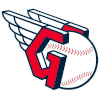 Jose Ramirez, 3B, Cleveland: It's hard to rise when you're already at the top. Among this year's first rounders, only Ramirez and Fernando Tatis did so, and Tatis barely counts, as he went from an ADP of 2.7 to a second-place ranking in earned auction value. Only five first-round picks (those two plus Juan Soto, Trea Turner and Freddie Freeman) are on track to finish as first-round values. Ramirez's season was very impressive, however, as he sits as the third most valuable player after getting drafted late in the first round. The fact that he's ranked in the top three despite a merely good .268 batting average is impressive, but it's a testament to his rare power-speed combination. Cedric Mullins and Trea Turner are the only other players with at least 25 homers and 26 steals. He also ranks fifth in runs plus RBI, making him an elite contributor in four of the five standard categories while still an asset in batting average. He could easily repeat a similar performance across the board with an even better average next season, as he's hit .300 twice and was at .292 as recently as last season. Heading into a season in which many first-rounders will come with significant injury questions, don't be surprised if the consistently excellent Ramirez creeps up into the top half of the first round.
Jose Ramirez, 3B, Cleveland: It's hard to rise when you're already at the top. Among this year's first rounders, only Ramirez and Fernando Tatis did so, and Tatis barely counts, as he went from an ADP of 2.7 to a second-place ranking in earned auction value. Only five first-round picks (those two plus Juan Soto, Trea Turner and Freddie Freeman) are on track to finish as first-round values. Ramirez's season was very impressive, however, as he sits as the third most valuable player after getting drafted late in the first round. The fact that he's ranked in the top three despite a merely good .268 batting average is impressive, but it's a testament to his rare power-speed combination. Cedric Mullins and Trea Turner are the only other players with at least 25 homers and 26 steals. He also ranks fifth in runs plus RBI, making him an elite contributor in four of the five standard categories while still an asset in batting average. He could easily repeat a similar performance across the board with an even better average next season, as he's hit .300 twice and was at .292 as recently as last season. Heading into a season in which many first-rounders will come with significant injury questions, don't be surprised if the consistently excellent Ramirez creeps up into the top half of the first round.
Round 2: 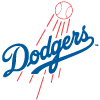 Max Scherzer, SP, Dodgers
Max Scherzer, SP, Dodgers
Round 3:  Rafael Devers, 3B, Red Sox
Rafael Devers, 3B, Red Sox
Round 4:  Vladimir Guerrero, 1B, Blue Jays
Vladimir Guerrero, 1B, Blue Jays
Round 5: 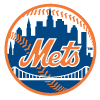 Javier Baez, 2B/SS, Mets
Javier Baez, 2B/SS, Mets
Round 6: 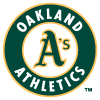 Matt Olson, 1B, Athletics
Matt Olson, 1B, Athletics
Round 7:  Paul Goldschmidt, 1B, Cardinals
Paul Goldschmidt, 1B, Cardinals
Round 8: 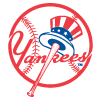 Giancarlo Stanton, OF, Yankees: There's no doubting what Stanton can do when healthy, but he slipped into the back half of the eighth round during draft season after appearing in just 18.5 percent of his team's games over the previous two years. He did miss two weeks with a strained quadriceps back in May, but he's set to finish somewhere between 133 and 139 games, a perfectly respectable number. He's mashed as usual when available, as his 34 homers tie him for 16th in the league, with every player ahead of him except for Fernando Tatis. appearing in more games. Stanton owns his best hard-hit rate (55.8 percent) since the metric began being tracked in 2015, while his 26.8 percent strikeout rate is his second-best mark over the last seven years. He's set to finish as a fourth-round value even with a bit of missed time, and while the injury discount won't go away heading into his age-32 season, this year provided a valuable reminder that he's worth paying up for as long as you can stomach a bit of risk.
Giancarlo Stanton, OF, Yankees: There's no doubting what Stanton can do when healthy, but he slipped into the back half of the eighth round during draft season after appearing in just 18.5 percent of his team's games over the previous two years. He did miss two weeks with a strained quadriceps back in May, but he's set to finish somewhere between 133 and 139 games, a perfectly respectable number. He's mashed as usual when available, as his 34 homers tie him for 16th in the league, with every player ahead of him except for Fernando Tatis. appearing in more games. Stanton owns his best hard-hit rate (55.8 percent) since the metric began being tracked in 2015, while his 26.8 percent strikeout rate is his second-best mark over the last seven years. He's set to finish as a fourth-round value even with a bit of missed time, and while the injury discount won't go away heading into his age-32 season, this year provided a valuable reminder that he's worth paying up for as long as you can stomach a bit of risk.
Round 9:  Marcus Semien, 2B/SS, Blue Jays
Marcus Semien, 2B/SS, Blue Jays
Round 10:  Kevin Gausman, SP, Giants: If you didn't know before, you should certainly know by now: Gausman is the real deal. Just like fellow former Oriole Jake Arrieta before him, he's emerged as an ace after leaving the organization that drafted him. His success wasn't as immediate, but the 31.9 percent strikeout rate he produced in the bullpen for the Reds after a midseason trade from Atlanta in 2019 proved to be prophetic. He followed that up with a 32.2 percent strikeout rate and a 3.62 ERA last year, but drafters evidently weren't fully convinced by that short-season performance. No one should need any more convincing at this point, however, as he's now been dominant over a full, 162-game schedule. His strikeout rate has dropped slightly but is still excellent at 29.6 percent, and he's paired that with a 6.5 percent walk rate, helping him cut his ERA to 2.87. A second-half slump appears worrisome on the surface, as his ERA sits at 4.73 since the break after coming in at 1.73 in the first half, but a jump in BABIP from .212 to .358 seemingly has a lot to do with that. His xFIP has actually improved slightly from 3.30 to 3.18, with a small drop in strikeout rate (30.5 percent to 28.4 percent) being cancelled out by a small improvement in walk rate (6.9 percent to 6.1 percent). Gausman sits as the ninth-best starter by earned auction value and makes for a fine fantasy No. 1 next season if you'd prefer to avoid the most expensive arms.
Kevin Gausman, SP, Giants: If you didn't know before, you should certainly know by now: Gausman is the real deal. Just like fellow former Oriole Jake Arrieta before him, he's emerged as an ace after leaving the organization that drafted him. His success wasn't as immediate, but the 31.9 percent strikeout rate he produced in the bullpen for the Reds after a midseason trade from Atlanta in 2019 proved to be prophetic. He followed that up with a 32.2 percent strikeout rate and a 3.62 ERA last year, but drafters evidently weren't fully convinced by that short-season performance. No one should need any more convincing at this point, however, as he's now been dominant over a full, 162-game schedule. His strikeout rate has dropped slightly but is still excellent at 29.6 percent, and he's paired that with a 6.5 percent walk rate, helping him cut his ERA to 2.87. A second-half slump appears worrisome on the surface, as his ERA sits at 4.73 since the break after coming in at 1.73 in the first half, but a jump in BABIP from .212 to .358 seemingly has a lot to do with that. His xFIP has actually improved slightly from 3.30 to 3.18, with a small drop in strikeout rate (30.5 percent to 28.4 percent) being cancelled out by a small improvement in walk rate (6.9 percent to 6.1 percent). Gausman sits as the ninth-best starter by earned auction value and makes for a fine fantasy No. 1 next season if you'd prefer to avoid the most expensive arms.
Round 11: 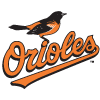 Ryan Mountcastle, 1B/OF, Orioles
Ryan Mountcastle, 1B/OF, Orioles
Round 12: 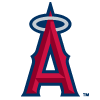 Shohei Ohtani, SP/DH, Angels
Shohei Ohtani, SP/DH, Angels
Round 13:  Chris Bassitt, SP, Athletics
Chris Bassitt, SP, Athletics
Round 14:  Justin Turner, 3B, Dodgers
Justin Turner, 3B, Dodgers
Round 15:  Austin Riley, 3B, Atlanta
Austin Riley, 3B, Atlanta
Round 16: 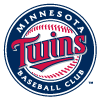 Jorge Polanco, 2B/SS, Twins
Jorge Polanco, 2B/SS, Twins
Round 17:  Austin Hays, OF, Orioles
Austin Hays, OF, Orioles
Round 18:  Mark Canha, OF, Athletics
Mark Canha, OF, Athletics
Round 19: 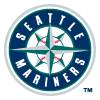 Kyle Seager, 3B, Mariners
Kyle Seager, 3B, Mariners
Round 20:  Robbie Ray, SP, Blue Jays
Robbie Ray, SP, Blue Jays
Round 21: 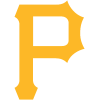 Bryan Reynolds, OF, Pirates: A category of players I missed hard on this season are those who had only one standout season on their resume in 2019 before struggling in last year's shortened campaign, as it's all too easy to believe that one excellent season was a blip when it wasn't matched by a player's most recent performance. Marcus Semien is probably the most notable name in that category, but Reynolds also fits the bill perfectly. He was mostly a fringe prospect when he made his debut but went on to hit .314/377/.503 as a rookie two years ago. While I don't think many people believed the .189 average he produced last season represented his true talent, it made it quite easy to write his rookie success off as a fluke given his modest pedigree. Instead, he's gone on to basically match his 2019 performance with a .293/.382/.504 line, and his peripherals suggest that he's actually taken a notable step forward. Both his strikeout and walk rates (which sit at 18.7 percent and 11.7 percent, respectively) are more than three points better than the numbers he produced as a rookie, while he now owns a 10.3 percent barrel rate after posting a 6.7 percent mark that season. That's helped him hit 24 homers, up from 16 in 134 games in 2019. The park and team context remain about as bad as they get for Reynolds, but it's now his awful 2020 season that looks like the outlier.
Bryan Reynolds, OF, Pirates: A category of players I missed hard on this season are those who had only one standout season on their resume in 2019 before struggling in last year's shortened campaign, as it's all too easy to believe that one excellent season was a blip when it wasn't matched by a player's most recent performance. Marcus Semien is probably the most notable name in that category, but Reynolds also fits the bill perfectly. He was mostly a fringe prospect when he made his debut but went on to hit .314/377/.503 as a rookie two years ago. While I don't think many people believed the .189 average he produced last season represented his true talent, it made it quite easy to write his rookie success off as a fluke given his modest pedigree. Instead, he's gone on to basically match his 2019 performance with a .293/.382/.504 line, and his peripherals suggest that he's actually taken a notable step forward. Both his strikeout and walk rates (which sit at 18.7 percent and 11.7 percent, respectively) are more than three points better than the numbers he produced as a rookie, while he now owns a 10.3 percent barrel rate after posting a 6.7 percent mark that season. That's helped him hit 24 homers, up from 16 in 134 games in 2019. The park and team context remain about as bad as they get for Reynolds, but it's now his awful 2020 season that looks like the outlier.
Round 22:  Diego Castillo, RP, Mariners
Diego Castillo, RP, Mariners
Round 23: 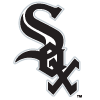 Dylan Cease, SP, White Sox
Dylan Cease, SP, White Sox
Round 24:  Jordan Romano, RP, Blue Jays
Jordan Romano, RP, Blue Jays
Round 25:  Adam Duvall, OF, Atlanta
Adam Duvall, OF, Atlanta
Round 26: 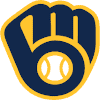 Willy Adames, SS, Brewers
Willy Adames, SS, Brewers
Round 27:  Jake McGee, RP, Giants: McGee's spot here is in part a reflection on the state of the closer pool in modern fantasy baseball. McGee was merely a reserve-round flyer during draft season, sandwiched between Stefan Crichton and Chris Martin among potential closers, as it looked like he'd be part of a committee at best. While he's perhaps not a true closer, he's clearly the primary option in San Francisco, where his 31 saves represent 58.5 percent of the team's total of 53. That number (which will likely be the number he finishes with given that he's still out with an oblique issue) would have merely tied him for 18th a decade ago, but it's good for seventh this season. As committees become more and more the norm, it becomes less and less bad to draft a pitcher who's part of one, especially if he's on a good team with plenty of saves to go around. While his status as a 10th-round value despite being part of a committee should make us reevaluate how we view similar relievers in the future, I'm not sure I'd be in on McGee specifically next year. His 2.72 ERA is a near match for his 2.66 mark from last season, but his strikeout rate has cratered from 41.8 percent to 24.3 percent, so he may not continue getting the same number of ninth-inning opportunities next year.
Jake McGee, RP, Giants: McGee's spot here is in part a reflection on the state of the closer pool in modern fantasy baseball. McGee was merely a reserve-round flyer during draft season, sandwiched between Stefan Crichton and Chris Martin among potential closers, as it looked like he'd be part of a committee at best. While he's perhaps not a true closer, he's clearly the primary option in San Francisco, where his 31 saves represent 58.5 percent of the team's total of 53. That number (which will likely be the number he finishes with given that he's still out with an oblique issue) would have merely tied him for 18th a decade ago, but it's good for seventh this season. As committees become more and more the norm, it becomes less and less bad to draft a pitcher who's part of one, especially if he's on a good team with plenty of saves to go around. While his status as a 10th-round value despite being part of a committee should make us reevaluate how we view similar relievers in the future, I'm not sure I'd be in on McGee specifically next year. His 2.72 ERA is a near match for his 2.66 mark from last season, but his strikeout rate has cratered from 41.8 percent to 24.3 percent, so he may not continue getting the same number of ninth-inning opportunities next year.
Round 28:  Tyler O'Neill, OF, Cardinals
Tyler O'Neill, OF, Cardinals
Round 29:  Alex Reyes, RP, Cardinals
Alex Reyes, RP, Cardinals
Round 30:  Brandon Belt, 1B, Giants
Brandon Belt, 1B, Giants
Undrafted:  Adolis Garcia, OF, Rangers
Adolis Garcia, OF, Rangers
Fallers
Round 1:  Christian Yelich, OF, Brewers (injured: Mike Trout and Shane Bieber): Yelich's fall dwarfs that of all other first rounders, as he's dropped by 217 spots when no other healthy first-round pick dropped more than 90. He's performed like a 15th-round pick; among outfielders, he's sandwiched between Eric Haase and Harrison Bader, players who regularly went undrafted. Injuries were part of the story, as three separate stints on the injured list have limited him to 113 games, but he's been remarkably pedestrian when healthy, as his .246/.359/.376 slash line is good for a merely average 100 wRC+. Outside of his excellent plate discipline, there's very little left of the player who won the MVP trophy in 2018. His 24.2 percent strikeout rate is the second-highest of his career, while his .130 ISO is his lowest since 2015. The power drought is well-deserved, as he's simply stopped hitting the ball in the air. Getting the ball off the ground drove his previous breakout, but he's lost all his gains in that regard, posting an average launch angle of 3.4 degrees, a number that would rank third-lowest in the league (sandwiched between Nicky Lopez and Eric Hosmer) if he had enough plate appearances to qualify. Those betting on a bounceback can point to his early-season back troubles, but this is really a two-year trend for Yelich, and things haven't improved in September, as he's hitting .207/.293/.305 this month.
Christian Yelich, OF, Brewers (injured: Mike Trout and Shane Bieber): Yelich's fall dwarfs that of all other first rounders, as he's dropped by 217 spots when no other healthy first-round pick dropped more than 90. He's performed like a 15th-round pick; among outfielders, he's sandwiched between Eric Haase and Harrison Bader, players who regularly went undrafted. Injuries were part of the story, as three separate stints on the injured list have limited him to 113 games, but he's been remarkably pedestrian when healthy, as his .246/.359/.376 slash line is good for a merely average 100 wRC+. Outside of his excellent plate discipline, there's very little left of the player who won the MVP trophy in 2018. His 24.2 percent strikeout rate is the second-highest of his career, while his .130 ISO is his lowest since 2015. The power drought is well-deserved, as he's simply stopped hitting the ball in the air. Getting the ball off the ground drove his previous breakout, but he's lost all his gains in that regard, posting an average launch angle of 3.4 degrees, a number that would rank third-lowest in the league (sandwiched between Nicky Lopez and Eric Hosmer) if he had enough plate appearances to qualify. Those betting on a bounceback can point to his early-season back troubles, but this is really a two-year trend for Yelich, and things haven't improved in September, as he's hitting .207/.293/.305 this month.
Round 2:  Cody Bellinger, 1B/OF, Dodgers
Cody Bellinger, 1B/OF, Dodgers
Round 3:  Blake Snell, SP, Padres (injured: Marcell Ozuna and Anthony Rendon)
Blake Snell, SP, Padres (injured: Marcell Ozuna and Anthony Rendon)
Round 4:  Kenta Maeda, SP, Twins
Kenta Maeda, SP, Twins
Round 5:  Keston Hiura, 1B/2B, Brewers
Keston Hiura, 1B/2B, Brewers
Round 6:  Jeff McNeil, 2B/3B/OF, Mets: Empty batting average guys always carry significant risk, as a player who excels in that category while being merely mediocre elsewhere certainly has value, but a player who's merely above-average there without providing much power or speed is entirely forgettable. McNeil was about as good as that archetype gets over his first three seasons in the league, as he hit .319 (with a 12.0 percent strikeout rate) but averaged a modest 17.6 homers and 7.0 steals per 600 plate appearances. The strained left hamstring that cost him just over a month in the first half is hurting his overall value, but he's been a disappointment even when healthy, slashing .252/.316/.363 over 115 games while adding an unimpressive seven homers and two steals. Exactly why he's been so much worse is tough to pinpoint, as he's still making plenty of contact, striking out just 13.3 percent of the time, and his batted-ball data is largely in line with previous seasons outside of his career-low 20.5 percent line-drive rate, about two ticks below where he was prior to this year. Part of his decline may stem from the fact that he'd overachieved in previous seasons, as he'd posted expected batting averages between .267 and .280 despite actual averages that ranged from .311 to .329. His disappointing campaign may be as much about regression to the mean as anything else.
Jeff McNeil, 2B/3B/OF, Mets: Empty batting average guys always carry significant risk, as a player who excels in that category while being merely mediocre elsewhere certainly has value, but a player who's merely above-average there without providing much power or speed is entirely forgettable. McNeil was about as good as that archetype gets over his first three seasons in the league, as he hit .319 (with a 12.0 percent strikeout rate) but averaged a modest 17.6 homers and 7.0 steals per 600 plate appearances. The strained left hamstring that cost him just over a month in the first half is hurting his overall value, but he's been a disappointment even when healthy, slashing .252/.316/.363 over 115 games while adding an unimpressive seven homers and two steals. Exactly why he's been so much worse is tough to pinpoint, as he's still making plenty of contact, striking out just 13.3 percent of the time, and his batted-ball data is largely in line with previous seasons outside of his career-low 20.5 percent line-drive rate, about two ticks below where he was prior to this year. Part of his decline may stem from the fact that he'd overachieved in previous seasons, as he'd posted expected batting averages between .267 and .280 despite actual averages that ranged from .311 to .329. His disappointing campaign may be as much about regression to the mean as anything else.
Round 7:  Jesus Luzardo, SP, Marlins
Jesus Luzardo, SP, Marlins
Round 8:  Dylan Bundy, SP, Angels
Dylan Bundy, SP, Angels
Round 9:  Ke'Bryan Hayes (injured: Trevor Rosenthal and Travis d'Arnaud)
Ke'Bryan Hayes (injured: Trevor Rosenthal and Travis d'Arnaud)
Round 10: 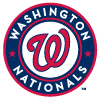 Patrick Corbin, SP, Nationals (injured: Sixto Sanchez)
Patrick Corbin, SP, Nationals (injured: Sixto Sanchez)
Round 11:  Andres Gimenez, 2B/3B/SS, Cleveland
Andres Gimenez, 2B/3B/SS, Cleveland
Round 12:  James McCann, C, Mets (injured: Clint Frazier)
James McCann, C, Mets (injured: Clint Frazier)
Round 13:  Zach Eflin, SP, Phillies (injured: Mike Soroka, Austin Nola, Corey Kluber)
Zach Eflin, SP, Phillies (injured: Mike Soroka, Austin Nola, Corey Kluber)
Round 14:  Dallas Keuchel, SP, White Sox: Starting pitchers only provide value in four categories in most setups, so drafting one who gets very few whiffs means you're taking a significant hit from one of probably six or seven starters in your lineup in a given week. That's a far more extreme commitment than drafting a hitter who has minimal power, as hitters provide value in 25 percent more categories, and you start twice as many of them as you do starting pitchers. Drafting Keuchel this high was already pretty questionable, as he was coming off a year in which he struck out just 16.3 percent of opposing batters. You were basically relying on batted-ball luck to make him an asset in ERA and WHIP, as he was in 2020, when he finished with a 1.99 ERA and 1.09 WHIP. The veteran lefty's 3.98 xFIP, 4.30 xERA and 4.57 SIERA that season all indicated that he was due for serious regression even if all he did was match his underlying performance, but he didn't even manage that. His strikeout rate cratered still further to 13.3 percent, a number which simply doesn't cut it in today's game. It might work well enough with the genuinely elite groundball rates Keuchel managed at his peak, but it wasn't nearly enough when paired with his merely above-average 55.2 percent groundball rate this season. His ERA inflated to 5.18, well above even where the estimators had him last season, leading to an earned value ranking of 872. I'll certainly be avoiding Keuchel next season along with every other low-strikeout arm.
Dallas Keuchel, SP, White Sox: Starting pitchers only provide value in four categories in most setups, so drafting one who gets very few whiffs means you're taking a significant hit from one of probably six or seven starters in your lineup in a given week. That's a far more extreme commitment than drafting a hitter who has minimal power, as hitters provide value in 25 percent more categories, and you start twice as many of them as you do starting pitchers. Drafting Keuchel this high was already pretty questionable, as he was coming off a year in which he struck out just 16.3 percent of opposing batters. You were basically relying on batted-ball luck to make him an asset in ERA and WHIP, as he was in 2020, when he finished with a 1.99 ERA and 1.09 WHIP. The veteran lefty's 3.98 xFIP, 4.30 xERA and 4.57 SIERA that season all indicated that he was due for serious regression even if all he did was match his underlying performance, but he didn't even manage that. His strikeout rate cratered still further to 13.3 percent, a number which simply doesn't cut it in today's game. It might work well enough with the genuinely elite groundball rates Keuchel managed at his peak, but it wasn't nearly enough when paired with his merely above-average 55.2 percent groundball rate this season. His ERA inflated to 5.18, well above even where the estimators had him last season, leading to an earned value ranking of 872. I'll certainly be avoiding Keuchel next season along with every other low-strikeout arm.
Round 15:  Leody Taveras, OF, Rangers: I'll go back-to-back here, as the only thing I try to avoid as much as low-strikeout starters is hitters with speed who won't hit enough to stick around in the lineup. There's a point in the draft at which it's worth taking such risks, but I'm not sure that point is round 15, given how rarely they work out, with Taveras' 2021 season serving as a useful reminder. Not only did Taveras fail to stick in the lineup, he also failed to stick in the majors, as he was demoted before the end of April and has played in just 43 games even after returning in late August. Between his two stints with the team, he's hit a miserable .169/.208/.288. While he's stolen 10 bases over that stretch, that simply doesn't have the same value to real-world teams as it does for fantasy teams, so it's no surprise that he failed to earn regular playing time. We probably should have seen this coming, as Taveras' respectable 94 wRC+ last season came with a 32.1 percent strikeout rate, and he was generally a below-average hitter in the minors, hitting .258/.323/.356 in full-season ball prior to this season. Speed and defense won't keep a player in the lineup when he simply can't hit big-league pitching, and while Taveras is just 23 years old, he has some huge strides to take before he deserves regular playing time.
Leody Taveras, OF, Rangers: I'll go back-to-back here, as the only thing I try to avoid as much as low-strikeout starters is hitters with speed who won't hit enough to stick around in the lineup. There's a point in the draft at which it's worth taking such risks, but I'm not sure that point is round 15, given how rarely they work out, with Taveras' 2021 season serving as a useful reminder. Not only did Taveras fail to stick in the lineup, he also failed to stick in the majors, as he was demoted before the end of April and has played in just 43 games even after returning in late August. Between his two stints with the team, he's hit a miserable .169/.208/.288. While he's stolen 10 bases over that stretch, that simply doesn't have the same value to real-world teams as it does for fantasy teams, so it's no surprise that he failed to earn regular playing time. We probably should have seen this coming, as Taveras' respectable 94 wRC+ last season came with a 32.1 percent strikeout rate, and he was generally a below-average hitter in the minors, hitting .258/.323/.356 in full-season ball prior to this season. Speed and defense won't keep a player in the lineup when he simply can't hit big-league pitching, and while Taveras is just 23 years old, he has some huge strides to take before he deserves regular playing time.
Round 16:  Drew Smyly, SP, Atlanta (injured: James Paxton, Jordan Hicks, Nick Senzel, Elieser Hernandez)
Drew Smyly, SP, Atlanta (injured: James Paxton, Jordan Hicks, Nick Senzel, Elieser Hernandez)
Round 17: 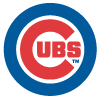 Zach Davies, SP, Cubs
Zach Davies, SP, Cubs
Round 18:  Amir Garrett, RP, Reds (injured: Nick Anderson)
Amir Garrett, RP, Reds (injured: Nick Anderson)
Round 19:  Ha-Seong Kim, 2B/3B/SS, Padres (injured: Wilson Ramos): I admittedly probably biased myself toward Kim after following him very closely as part of my KBO coverage last year, but it was hard not to like him given that he did just about everything in Korea. He finished top-10 in homers and steals while walking more than he struck out, all while primarily playing shortstop. You'd obviously expect some regression given the jump in levels, but he could regress a fair amount and still be a useful utility man, with the upside for more if exposure to big-league coaching unlocked anything new for the 25-year-old. That was the theory, at least, but the results have been quite disappointing. He's only received 285 plate appearances, and he hasn't deserved many more, as he's hit .204/.272/.345 with just seven homers and five steals. Kim simply hasn't hit the ball hard enough to be an MLB regular, as his .305 xSLG would rank last in the league if he had enough plate appearances to qualify. Interestingly, he's graded out as a strong defender despite scouting reports that indicated defense could be a weak spot in his game. That keeps open the possibility of him reaching double-digits in homers and steals if he plays every day, which does have deep-league value, but he'd need to be on a different roster to generate much excitement.
Ha-Seong Kim, 2B/3B/SS, Padres (injured: Wilson Ramos): I admittedly probably biased myself toward Kim after following him very closely as part of my KBO coverage last year, but it was hard not to like him given that he did just about everything in Korea. He finished top-10 in homers and steals while walking more than he struck out, all while primarily playing shortstop. You'd obviously expect some regression given the jump in levels, but he could regress a fair amount and still be a useful utility man, with the upside for more if exposure to big-league coaching unlocked anything new for the 25-year-old. That was the theory, at least, but the results have been quite disappointing. He's only received 285 plate appearances, and he hasn't deserved many more, as he's hit .204/.272/.345 with just seven homers and five steals. Kim simply hasn't hit the ball hard enough to be an MLB regular, as his .305 xSLG would rank last in the league if he had enough plate appearances to qualify. Interestingly, he's graded out as a strong defender despite scouting reports that indicated defense could be a weak spot in his game. That keeps open the possibility of him reaching double-digits in homers and steals if he plays every day, which does have deep-league value, but he'd need to be on a different roster to generate much excitement.
Round 20:  Mauricio Dubon, 2B/3B/SS/OF, Giants
Mauricio Dubon, 2B/3B/SS/OF, Giants
Round 21:  Jon Berti, 2B/3B/OF, Marlins
Jon Berti, 2B/3B/OF, Marlins
Round 22:  Justus Sheffield, SP, Mariners
Justus Sheffield, SP, Mariners
Round 23:  Brad Keller, SP, Royals (injured: Noah Syndergaard)
Brad Keller, SP, Royals (injured: Noah Syndergaard)









